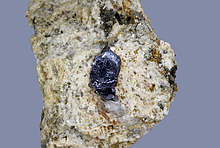Home PageAbout MindatThe Mindat ManualHistory of MindatCopyright StatusWho We AreContact UsAdvertise on Mindat
Donate to MindatCorporate SponsorshipSponsor a PageSponsored PagesMindat AdvertisersAdvertise on Mindat
Learning CenterWhat is a mineral?The most common minerals on earthInformation for EducatorsMindat ArticlesThe ElementsThe Rock H. Currier Digital LibraryGeologic Time
Minerals by PropertiesMinerals by ChemistryAdvanced Locality SearchRandom MineralRandom LocalitySearch by minIDLocalities Near MeSearch ArticlesSearch GlossaryMore Search Options
The Mindat ManualAdd a New PhotoRate PhotosLocality Edit ReportCoordinate Completion ReportAdd Glossary Item
Mining CompaniesStatisticsUsersMineral MuseumsClubs & OrganizationsMineral Shows & EventsThe Mindat DirectoryDevice SettingsThe Mineral Quiz
Photo SearchPhoto GalleriesSearch by ColorNew Photos TodayNew Photos YesterdayMembers' Photo GalleriesPast Photo of the Day GalleryPhotography
╳Discussions
💬 Home🔎 Search📅 LatestGroups
EducationOpen discussion area.Fakes & FraudsOpen discussion area.Field CollectingOpen discussion area.FossilsOpen discussion area.Gems and GemologyOpen discussion area.GeneralOpen discussion area.How to ContributeOpen discussion area.Identity HelpOpen discussion area.Improving Mindat.orgOpen discussion area.LocalitiesOpen discussion area.Lost and Stolen SpecimensOpen discussion area.MarketplaceOpen discussion area.MeteoritesOpen discussion area.Mindat ProductsOpen discussion area.Mineral ExchangesOpen discussion area.Mineral PhotographyOpen discussion area.Mineral ShowsOpen discussion area.Mineralogical ClassificationOpen discussion area.Mineralogy CourseOpen discussion area.MineralsOpen discussion area.Minerals and MuseumsOpen discussion area.PhotosOpen discussion area.Techniques for CollectorsOpen discussion area.The Rock H. Currier Digital LibraryOpen discussion area.UV MineralsOpen discussion area.Recent Images in Discussions
Deutsches Mindat - ForumBond Valence Methode für Bestimmung von OH/H2O

20th May 2007 10:50 UTCfunky
Ich hab gelesen, dass man die Bond Valence Methode benutzen kann, um festzustellen, ob man Wasser oder Hydroxid oder Oxidionen im Mineral hat.
Kann mir da jemand weiterhelfen? Ich kenn die Bindungslängen für die Metall-Sauerstoff-Abstände, man kann aber Hs nicht in der Elektronendichte sehen, deshalb diese Methode.
Vielen Dank!
Gruß, funky
21st May 2007 10:47 UTCUwe Kolitsch Manager
http://www.mindat.org/mesg-9-65694.html

22nd May 2007 10:12 UTCfunky
Vielen Dank für die Antwort und den Link zum Programm.
Also, das heisst, ich mach das folgendermaßen:
Sauerstoffatom aussuchen und Umgebung (also Metallkationen) finden
Valenzbeitrag mit Programm berechnen (z.B. Ca2+ und O2- eingeben)
Bindungslänge eingeben
Valenz erhalten
alle Valenzbeiträge für ein Sauerstoff addieren und mit deiner Liste vergleichen
-> OH oder Wasser oder O2-
Richtig so?
Noch zwei Fragen: woher hast du die Tabelle für die Unterscheidung? (Literatur?)
Kann man ohne Probleme die Standardwerte für B und Ro benutzen, die das Programm vorgibt? B = Bindungsordnung, R0= Standardbindungslänge??
Schönen Gruß, funky
22nd May 2007 17:23 UTCUwe Kolitsch Manager
Ja, am besten zuerst an einem Bsp. ausprobieren.
Deine Struktur am besten auch mal zeichnen (mit ATOMS, DIAMOND o.ä.) und die Koordination aller Atome genauer anschauen.
Noch zwei Fragen: woher hast du die Tabelle für die Unterscheidung? (Literatur?)
Erfahrungswerte.
Kann man ohne Probleme die Standardwerte für B und Ro benutzen, die das Programm vorgibt? B = Bindungsordnung, R0= Standardbindungslänge??
Ja. Brese & O'Keeffe-Werte funktionieren normalerweise sehr gut.

23rd May 2007 17:13 UTCfunky
Also, funktioniert alles gut! Nochmal danke!
Gruß




Mindat.org is an outreach project of the Hudson Institute of Mineralogy, a 501(c)(3) not-for-profit organization.
Copyright © mindat.org and the Hudson Institute of Mineralogy 1993-2024, except where stated. Most political location boundaries are © OpenStreetMap contributors. Mindat.org relies on the contributions of thousands of members and supporters. Founded in 2000 by Jolyon Ralph.
Privacy Policy - Terms & Conditions - Contact Us / DMCA issues - Report a bug/vulnerability Current server date and time: April 20, 2024 04:48:53
Copyright © mindat.org and the Hudson Institute of Mineralogy 1993-2024, except where stated. Most political location boundaries are © OpenStreetMap contributors. Mindat.org relies on the contributions of thousands of members and supporters. Founded in 2000 by Jolyon Ralph.
Privacy Policy - Terms & Conditions - Contact Us / DMCA issues - Report a bug/vulnerability Current server date and time: April 20, 2024 04:48:53











